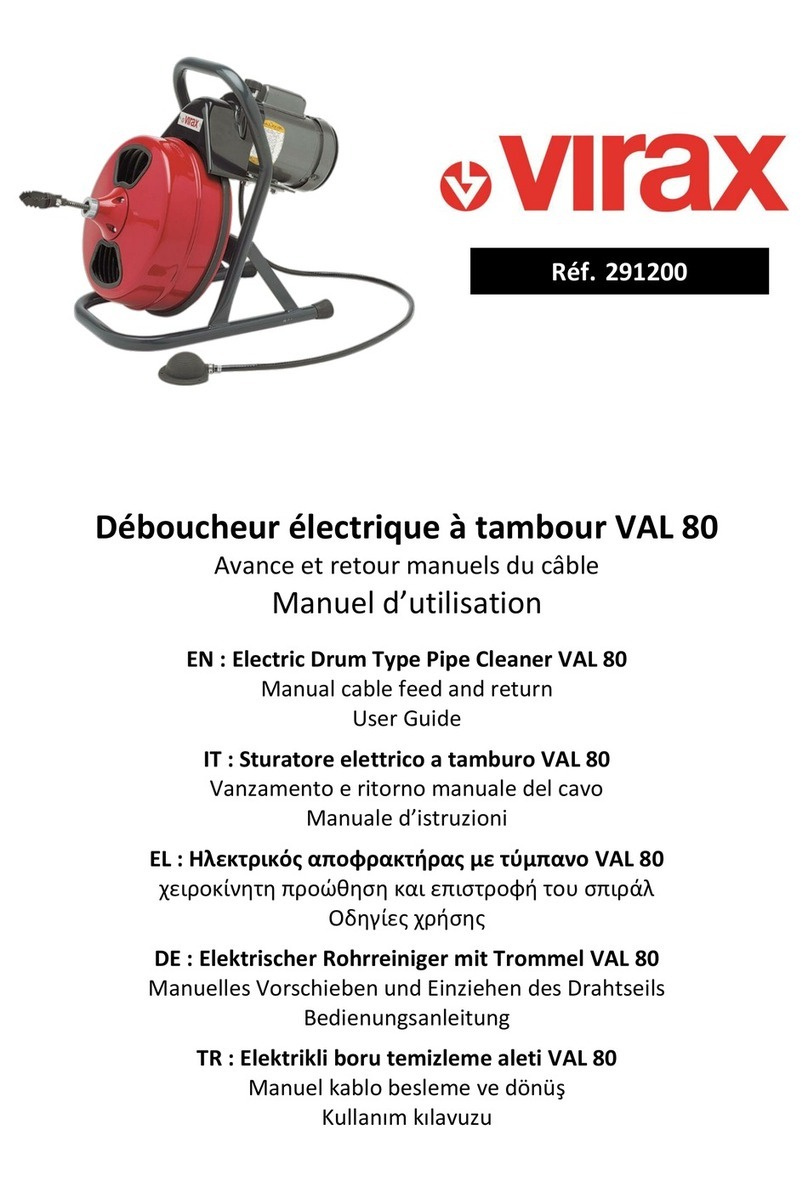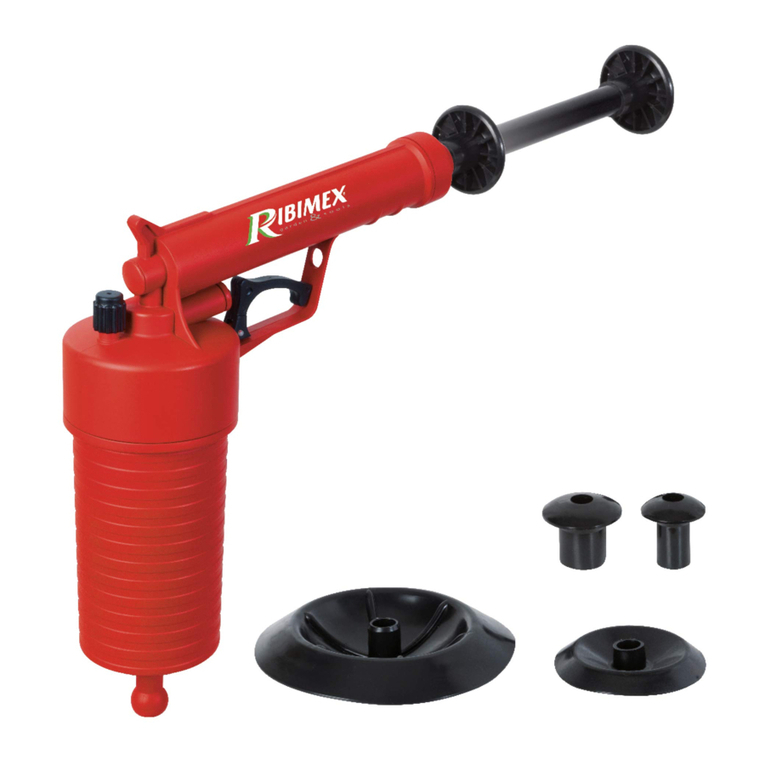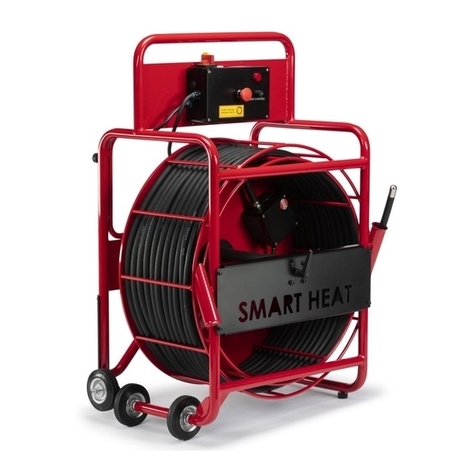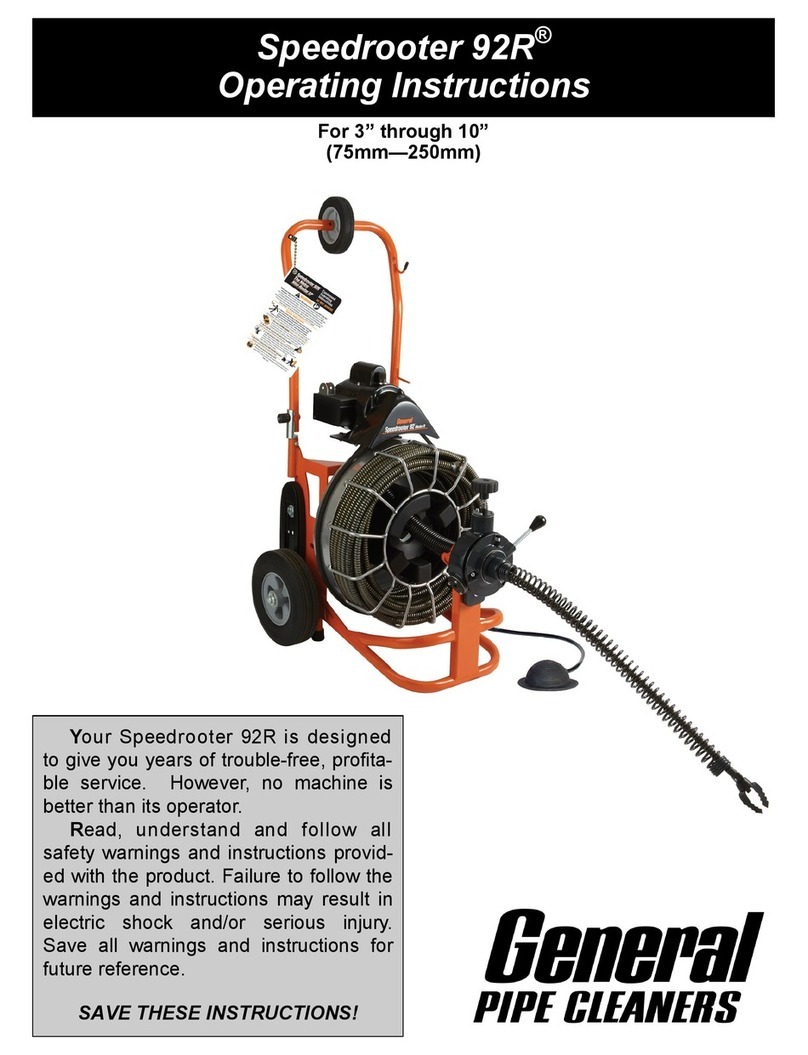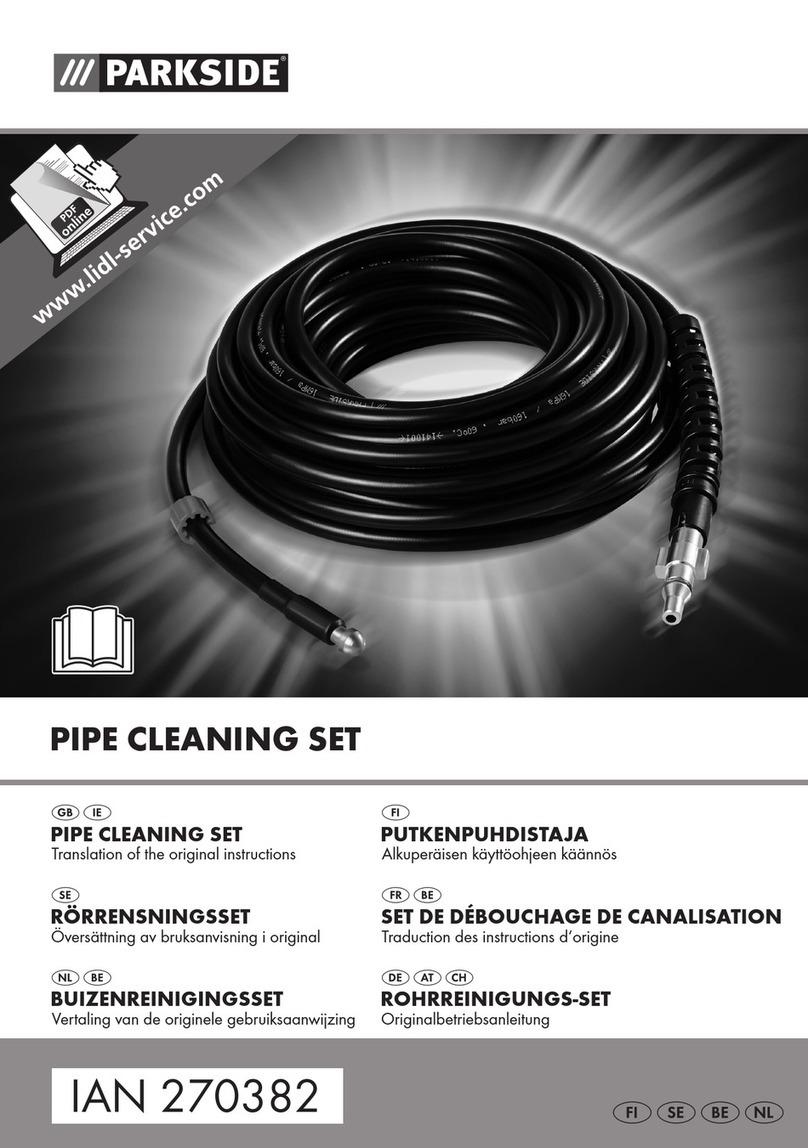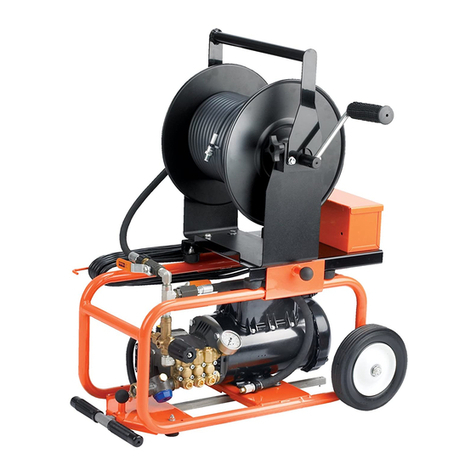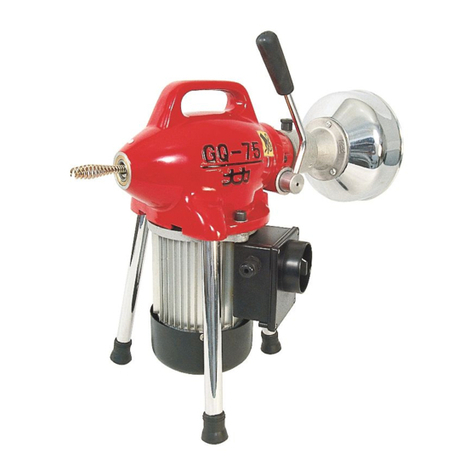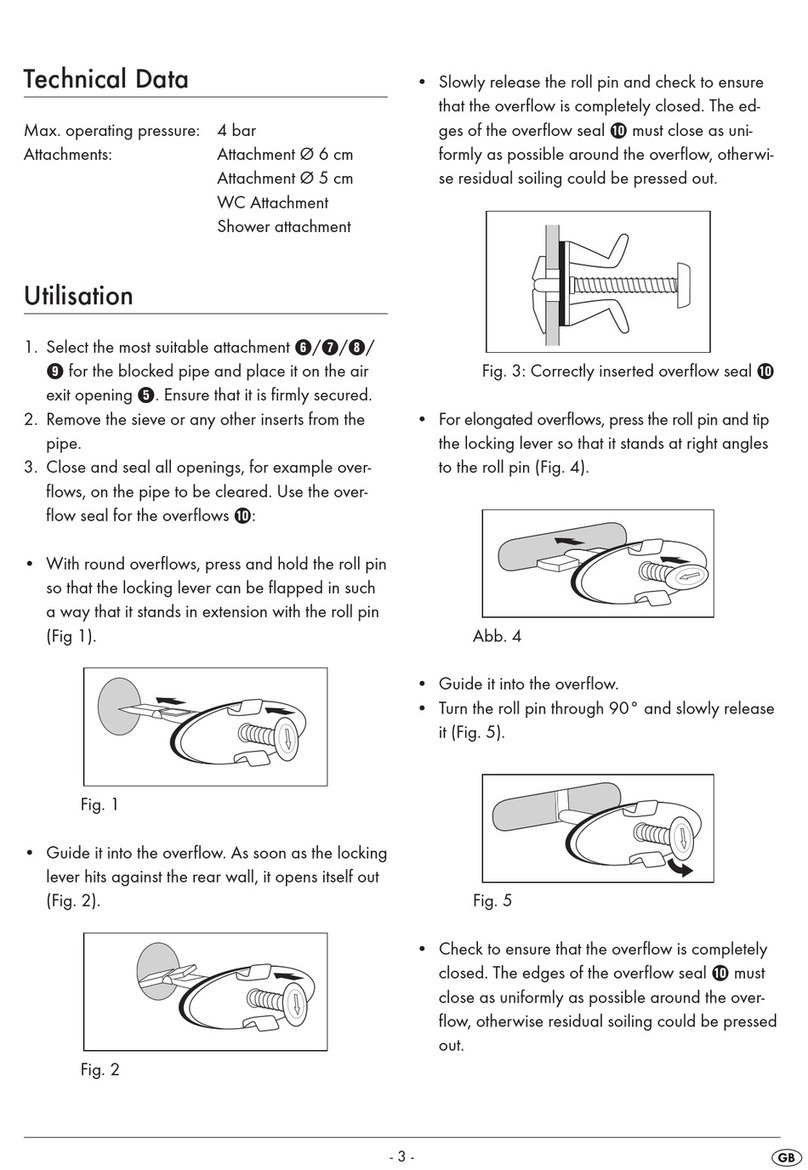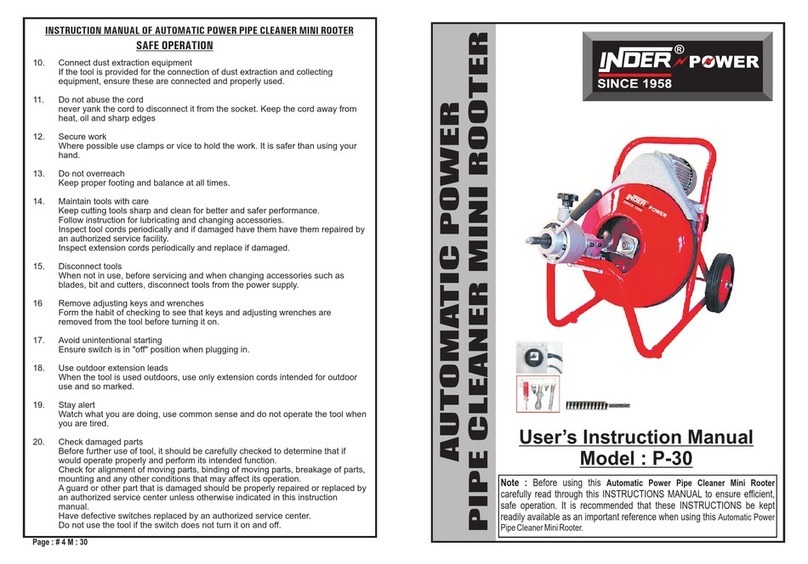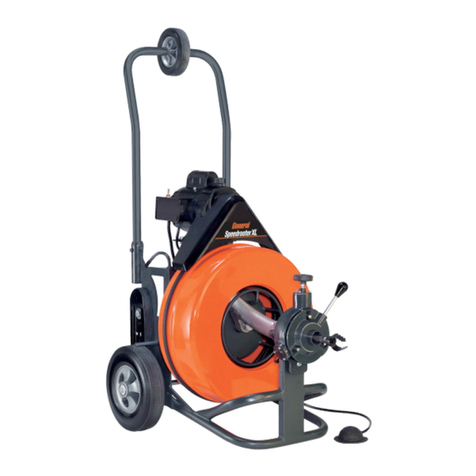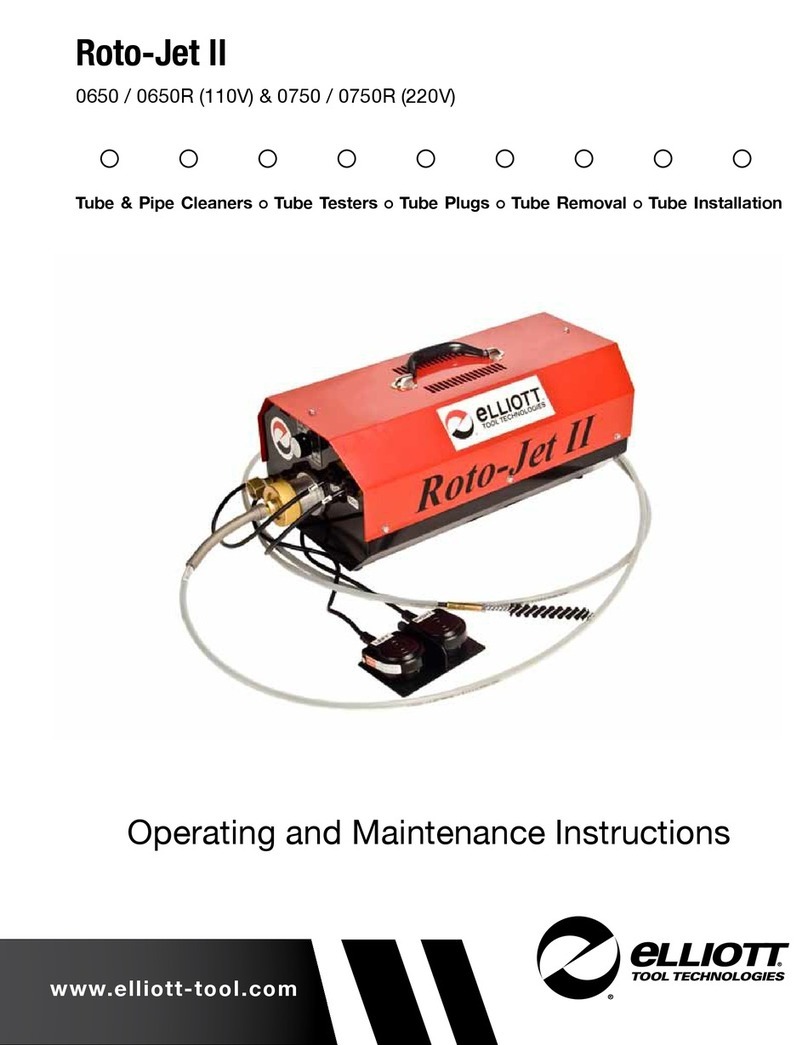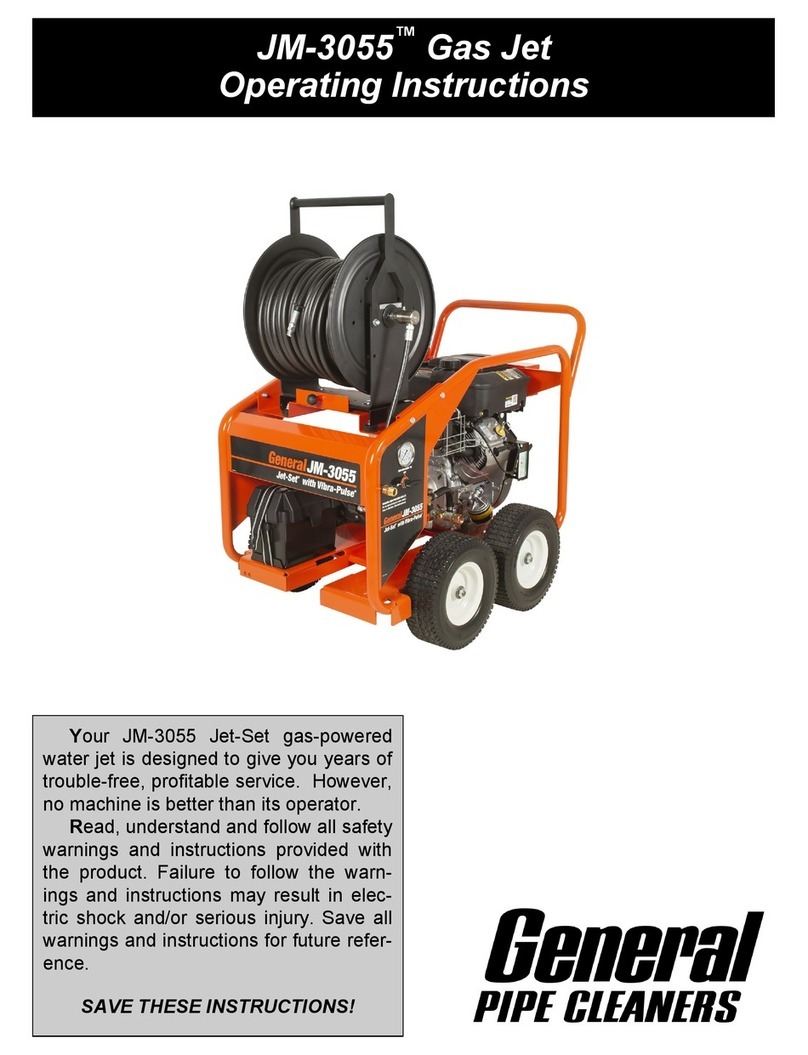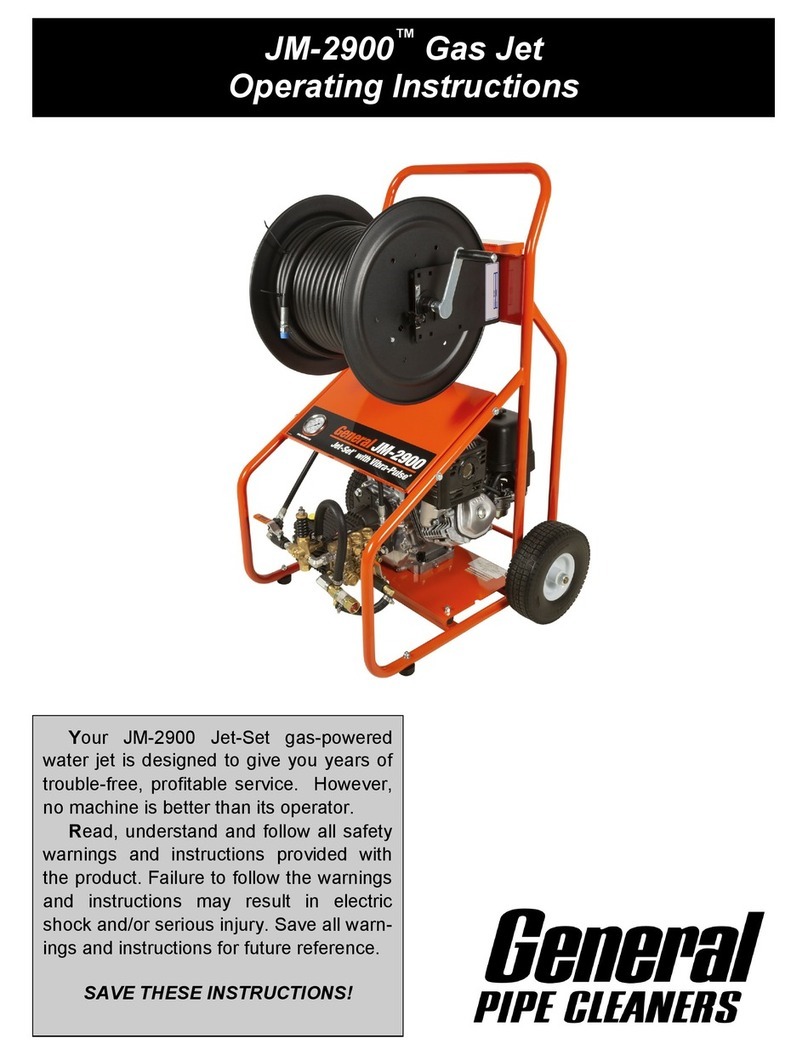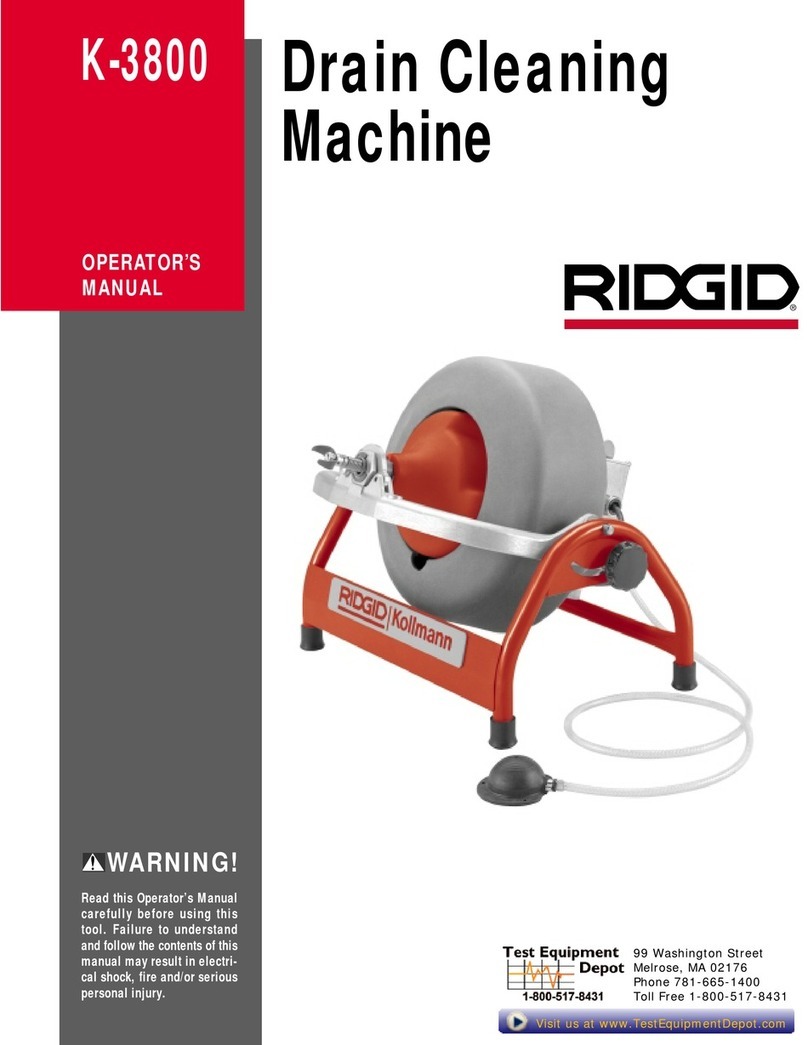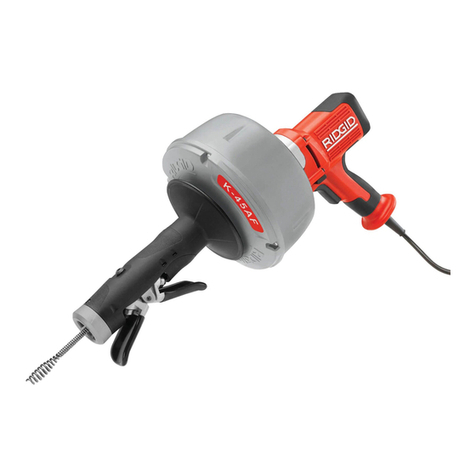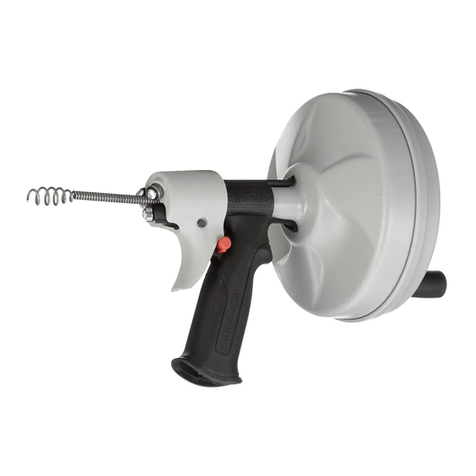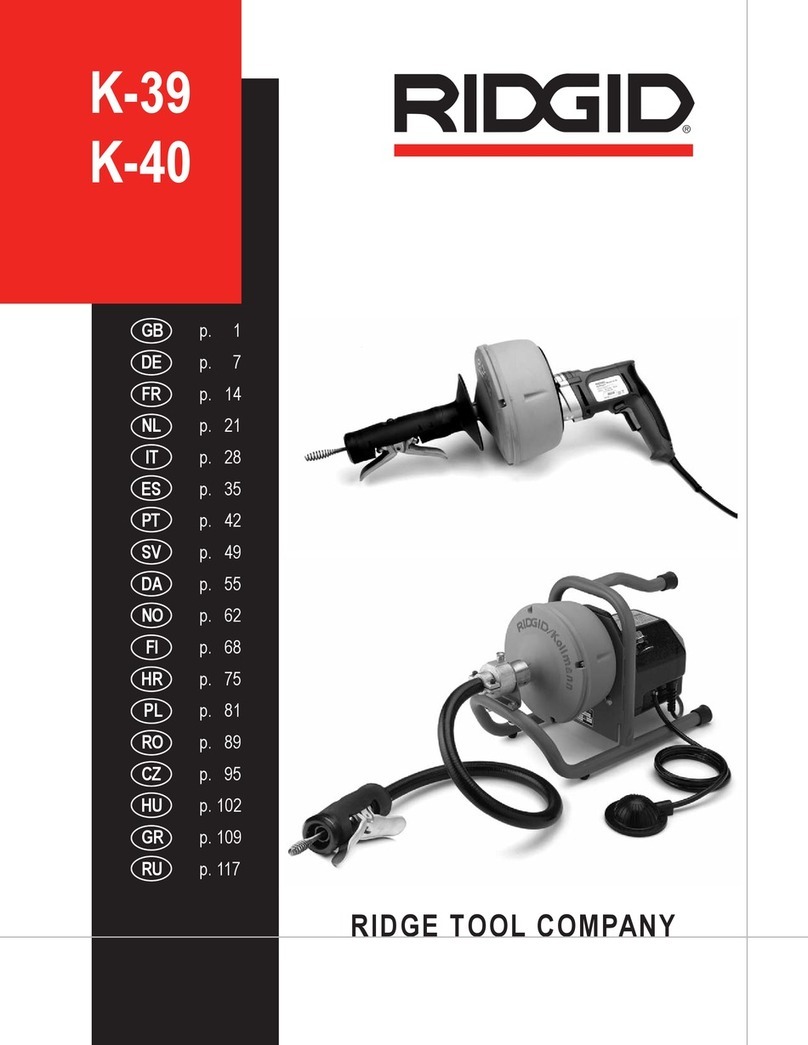K-1000 Rodder
Ridge Tool Company2
General Safety Information
WARNING! Read and understand all instructions. Failure
to follow all instructions listed below may
result in fire and/or serious personal injury.
SAVE THESE INSTRUCTIONS!
Work Area Safety
•Keep your work area clean and well lit. Cluttered
benches and dark areas invite accidents.
•Do not operate power tools in explosive atmo-
spheres, such as in the presence of flammable
liquids, gases, or dust. Tools create sparks which
may ignite the dust or fumes.
•Keep bystanders, children, and visitors away while
operating a tool. Distractions can cause you to lose
control.
•Keep the engine at least one meter (3 feet) away
from buildings and other equipment during oper-
ation. Do not place flammable objects close to
engine. Procedures should be followed to prevent fire
hazards and to provide adequate ventilation.
Personal Safety
•Stay alert, watch what you are doing and use com-
mon sense when operating a power tool. Do not
use tool while tired or under the influence of drugs,
alcohol, or medications. A moment of inattention
while operating power tools may result in serious per-
sonal injury.
•Dress properly. Do not wear loose clothing or jew-
elry. Contain long hair. Keep your hair, clothing, and
gloves away from moving parts. Loose clothes, jew-
elry, or long hair can be caught in moving parts.
•Remove adjusting keys before turning the tool
ON. A wrench or a key that is left attached to a rotating
part of the tool may result in personal injury.
•Do not over-reach. Keep proper footing and bal-
ance at all times. Proper footing and balance enables
better control of the tool in unexpected situations.
•Use safety equipment. Always wear eye protection.
Dust mask, non-skid safety shoes, hard hat, or hear-
ing protection must be used for appropriate conditions.
Tool Use and Care
•Do not force tool. Use the correct tool for your
application. The correct tool will do the job better and
safer at the rate for which it is designed.
•Store idle tools out of the reach of children and
other untrained persons. Tools are dangerous in
the hands of untrained users.
•Maintain tools with care. Keep cutting tools sharp
and clean. Properly maintained tools with sharp cutting
edges are less likely to bind and are easier to control.
•Check for misalignment or binding of moving parts,
breakage of parts, and any other condition that
may affect the tools operation. If damaged, have the
tool serviced before using. Many accidents are
caused by poorly maintained tools.
•Use only accessories that are recommended by the
manufacturer for your tool. Accessories that may
be suitable for one tool may become hazardous when
used on another tool.
•Keep handles dry and clean; free from oil and
grease. Allows for better control of the tool.
Service
•Tool service must be performed only by qualified
repair personnel. Service or maintenance performed
by unqualified repair personnel could result in injury.
•When servicing a tool, use only identical replace-
ment parts. Follow instructions in the Maintenance
Section of this manual. Use of unauthorized parts or
failure to follow maintenance instructions may create a
risk of injury.
Specific Safety Information
WARNING
Read this operator’s manual carefully before using
the RIDGID K-1000 Rodder. Failure to understand
and follow the contents of this manual may result
in fire and/or serious personal injury.
Call the Ridge Tool Company, Technical Service Depart-
ment at (800) 519-3456 if you have any questions.
Machine Safety
•Wear leather gloves provided with the machine.
Never grasp a rotating rod with a rag or loose fitting
cloth glove. Could become wrapped around the rod
and cause serious injury.
•Wear safety glasses and rubber soled, non-slip
shoes. Use of this safety equipment may prevent se-
rious injury.
•Never operate machine with guards removed.
Fingers can be caught between the chain sprocket.
•Do not operate machine in (REV) reverse. Operating
